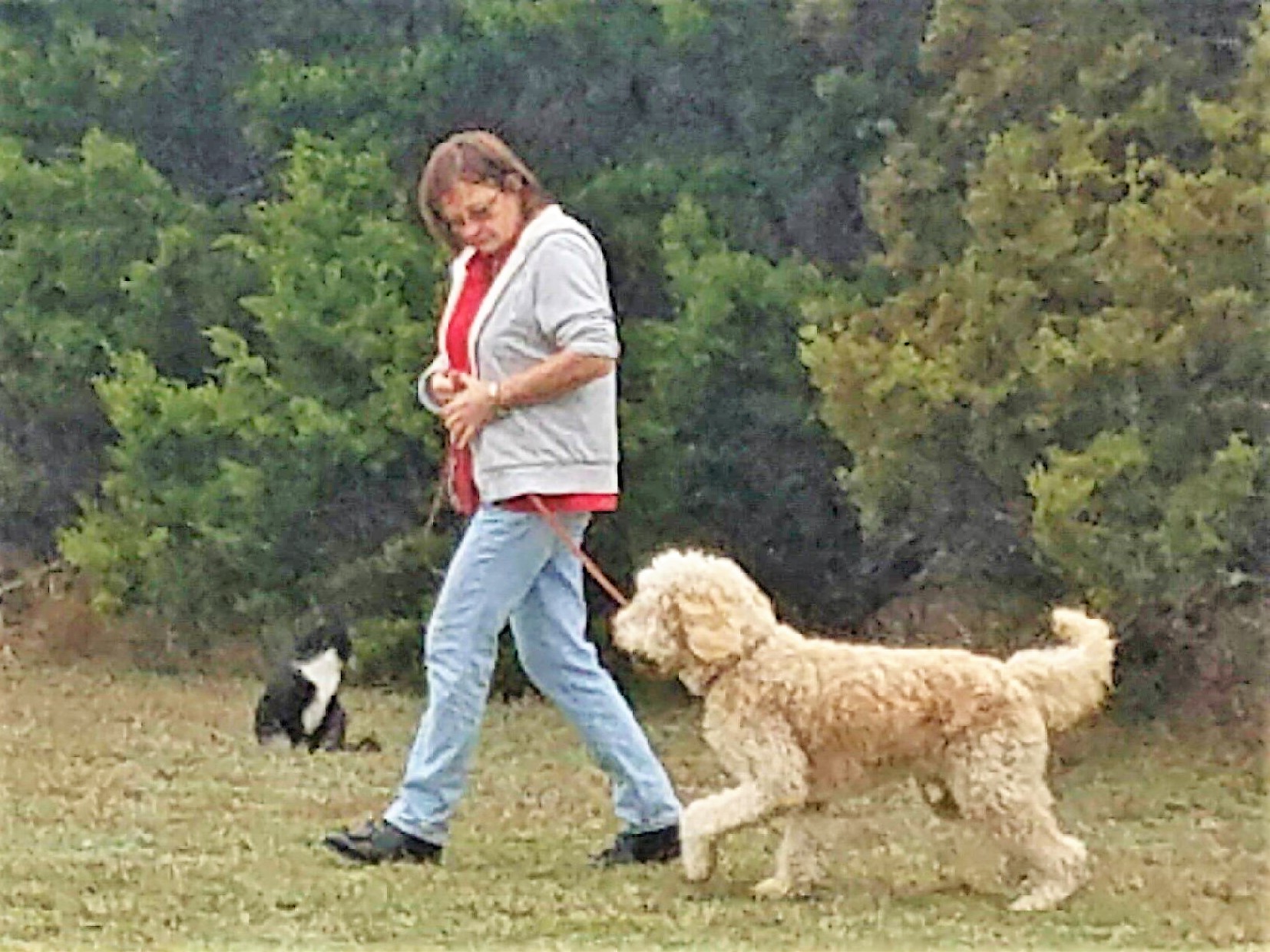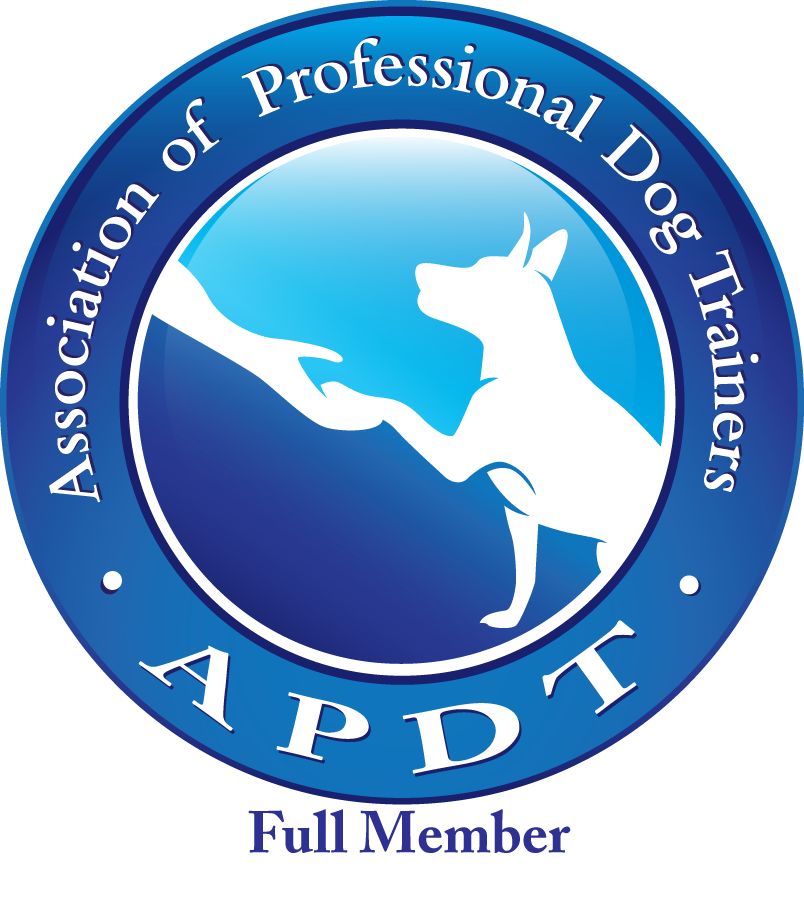Our mission statement at A Better Dog Training is:
To improve and enhance pack leader-dog/pack relationships by teaching our clients the proven skills and techniques that will train their dogs to become better citizens. With the ultimate goal of keeping every dog in it’s forever home forever.
Jan Echavarry is the owner, founder, and manager of A Better Dog Training.
Here is her story:

“My love of animals spans my entire life. I was raised on a farm in Washington, surrounded by dogs and horses. I believed for the longest time that all animals ‘behaved’ instinctively, only to discover in my later years that they behaved because my dad had trained them to act that way. As I grew and had dogs of my own, I discovered that it requires commitment, devotion, and love to train dogs to act appropriately at all times.
My love of training began 17 years ago when I began assisting at a local dog-rescue facility in South Texas. I learned that most of the dogs needed basic skills, just as much as they needed a permanent, loving home. Their inability to interact was a major reason that they were unwanted, through no fault of their own. On my weekly visits to local pet stores, I became interested and completed a training course that allowed me to train in the local PetSmart stores. After a time, I realized that there was a burning desire in me to share my knowledge and skills on a larger scale. I researched the available training schools and chose a nationally recognized program in California. I enrolled and completed the five-week, in person, course.

In 2007, I established “A Better Dog Training” in San Antonio and have grown to include not only in-home training, but boarding (in my new facility), as well as board-and-train. My goal is and has always been to assist in making your pet, your pride!”
Jan has always been active in the community by volunteering for local events such as Career Day at May Elementary School, presenting a dog training lecture at the Bulverde Spring Branch Library, and hosting a booth at Spring Branch Veterinary Hospital’s Open House.
Career Day is usually a presentation on the different kinds of dog training, how to get into the business, and what education is needed. Jan brings Troy, a very large yellow lab, to these events so that he can demonstrate obedience to basic commands. Most importantly, Troy helps Jan to show the children the appropriate and safe way to meet a dog. Troy is not only a great ice breaker, but he helps to alleviate some children’s fear of large dogs.
Dog Training lectures cover the training methods that different trainers use and a discussion of leadership from a dog’s point of view. Again, Troy is used in a demonstration of basic obedience and then the floor is opened up for general questions. Jan has fielded questions ranging from potty training to reading dog body language to dog aggression issues.
At the Open House for Spring Branch Veterinary Hospital, Jan was available for training consultations and answering questions and used Troy to give obedience demonstrations. The Open House was also a fund raiser for the Canyon Lake Animal Shelter Society (CLASS). CLASS brought several adoptable animals and given Jan’s soft spot for rescues, she offered a free training lesson for any dogs that were adopted that day!
Balanced Reward-Based Training
There is a wide spectrum of dog training philosophies, with positive-only reinforcement at one end of the spectrum and correction-based training at the other. At A Better Dog Training, we use what is called Balanced Reward-Based Training. This method uses both positive and negative reinforcement that is customized for each individual dog. Dogs are individuals, just like people. Successful training methods for one dog will often be completely different for another dog. We have found this to be much more effective than either positive-only reinforcement or correction-based training.
If you watch a group of dogs interact, they correct each other- constantly. These corrections are not abusive. They are an essential part of communication that accomplishes a crucial element in any relationship- boundaries. Balanced Reward-Based Training mimics how dogs interact with one another. This includes consistent, timely, and appropriate praise as well as consistent, timely, and appropriate correction.
High value rewards are used in the learning phase of training to teach behaviors. Even after a dog has learned a command or behavior, there will still come a time with every dog when surrounding distractions are much more compelling than even high value rewards. The “balanced” part of a reward-based system is that corrections are introduced once a command or behavior is learned but not followed. A correction is a consequence for not following previously learned behaviors or directions. Its purpose is not to punish a behavior but to refocus the dog on the desired behavior.
An experienced Balanced Reward-Based Trainer is one that utilizes a wide range of tools and adapts his methods to suit the needs of the individual dog, owner, and environment.
Goals
Our number one goal is to achieve each client’s desired results. We aim to do this by tailoring the program to meet each client’s situation and individual needs. Whether you need aggressive dog training, or simply looking for puppy classes, we can help. And though no two clients and their respective situations are the same, our training programs:
- utilize core concepts that apply to every successful pack leader/pack relationship
- focus on the issues that are unique to that client and pet
Being your dog’s leader is built on a foundation of trust. It is not a role that is utilized only during a training session. In order for your dog to respect you as a leader, you must utilize the leader position in all aspects of your relationship. This is done by being confident and by setting and maintaining limits, not adapting yourself to the dog. If you are leading, the dog is following.
Call 210-788-6157 to make your appointment today!

